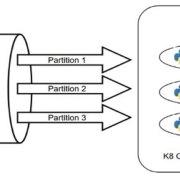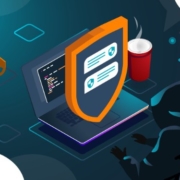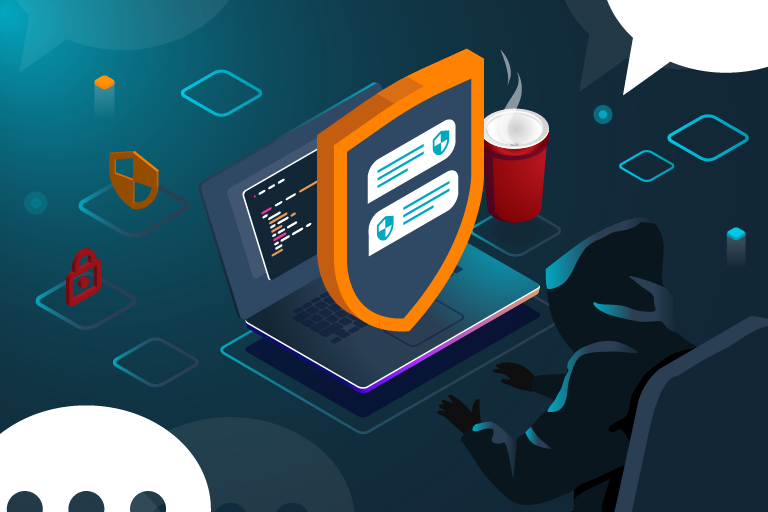WALLDORF (Allemagne), le 8 mars 2023. SAP SE (NYSE: SAP) annonce des innovations majeures et des partenariats clés dans le domaine de la data, pour permettre aux clients d’accéder aux données critiques de leur entreprise, venant ainsi accélérer la compréhension des informations et améliorer leur prise de décision. SAP lance la solution SAP® Datasphere, la dernière génération de solutions de gestion de données, qui permet aux clients d’accéder facilement aux informations business directement exploitables dans l’ensemble du paysage de la data. SAP annonce également son partenariat avec des entreprises leaders dans les secteurs de la data et de l’IA – Collibra NV, Confluent Inc., DataBricks Inc. et DataRobot Inc. – afin d’enrichir SAP Datasphere et permettre aux entreprises de concevoir une architecture de données unifiée, combinant en toute sécurité les données SAP et non-SAP.
Jusqu’à aujourd’hui, l’accès et l’utilisation des données constituaient un réel défi au vu de la complexité de leur localisation et de leur système, qu’elles soient chez des fournisseurs de cloud computing, de data ou en site propre. Les clients devaient extraire les données depuis leurs sources d’origine et les exporter vers un point central, perdant au passage un aspect essentiel de leur contexte métier, et ne le récupérant qu’au prix d’efforts intenses sur le plan informatique. Avec ces annonces, SAP Datasphere met fin à cette « taxe cachée » sur la data, permettant aux clients de construire leur architecture de données qui fournit rapidement des informations significatives, tout en préservant le contexte et la logique de l’organisation.
« Les clients SAP générant 87% du commerce total mondial, les données SAP font partie des actifs business les plus précieux de l’entreprises et sont contenues dans les fonctions les plus déterminantes d’une organisation : de la fabrication aux chaînes d’approvisionnement, en passant par la finance, les ressources humaines et bien plus encore » a déclaré Juergen Mueller, Chief Technology Officer et Membre Exécutif du Board de SAP. « Nous voulons aider nos clients à passer à la vitesse supérieure pour intégrer facilement, et en toute confiance, les données SAP avec les données non-SAP provenant d’applications et de plateformes tierces, afin de débloquer des informations et des connaissances entièrement nouvelles pour que la transformation digitale atteigne un autre niveau. »
SAP Datasphere
Disponible dès aujourd’hui, SAP Datasphere est la nouvelle génération de SAP Data Warehouse Cloud. Elle permet aux professionnels de la data de fournir un accès évolutif aux données critiques de l’entreprise. Grâce à une expérience simplifiée pour l’intégration, le catalogage, la modélisation sémantique, le stockage et la virtualisation des données, SAP Datasphere permet aux professionnels de la data de faciliter la distribution des données critiques de l’entreprise en préservant le contexte et la logique de cette dernière, avec une vision 360° de l’ensemble des données de l’organisation. SAP Datasphere s’appuie sur SAP Business Technology Platform (BTP), intégrant de solides fonctionnalités en termes de sécurité pour l’entreprise : base de données, cryptage, gouvernance. Aucune étape ou migration supplémentaire n’est requise pour les clients actuels de SAP Data Warehouse Cloud, qui bénéficieront automatiquement des nouvelles fonctionnalités de SAP Datasphere dans leur environnement produit. Ces nouvelles fonctionnalités comprennent le catalogage des données qui permet de les découvrir et de les gérer automatiquement, de simplifier leur réplication avec une mise à jour en temps réel, et d’améliorer leur modélisation pour conserver la richesse du contexte métier dans les applications SAP. D’autres fonctionnalités d’intégration d’applications reliant les données et les métadonnées des applications SAP Cloud à SAP Datasphere sont prévues.
Messer Americas, leader mondial dans le domaine des gaz industriels et médicaux en Amérique du Nord et du Sud, avait besoin d’un accès simple et sécurisé aux données SAP et non SAP au sein de son organisation pour améliorer la prise de décision – pilotée par les données – et de libérer les ressources informatiques afin qu’elles se concentrent sur des tâches plus stratégiques. Grâce à SAP Datasphere, Messer Americas a construit une architecture moderne de données qui préserve le contexte de ses données d’entreprise.
« SAP Datasphere simplifie notre vue d’ensemble de la data et renforce notre confiance dans les données que nous utilisons tous les jours, ce qui nous permet de mieux répondre aux besoins de l’entreprises » explique David Johnston, Chief Information Officer de Messer Americas. « Nous sommes en mesure de réagir plus rapidement aux changements émergents de l’offre et de la demande, ce qui se traduit par une meilleure gestion des stocks, un meilleur service client et l’optimisation de notre chaîne logistique ».
Partenariats stratégiques
SAP et ses nouveaux partenaires open data aideront des centaines de millions d’utilisateurs à travers le monde à prendre des décisions stratégiques fondées sur des quantités massives de données. Les partenaires stratégiques de SAP apportent leur talent unique, issu de leur écosystème, et permettent aux clients de combiner toutes leurs données comme jamais auparavant.
« Tout le monde souhaite avoir accès aux données SAP, c’est pourquoi il est absolument nécessaire de prendre le meilleur des fournisseurs technologiques pour mettre en place une stratégie complète autour de la data », a déclaré Dan Vesset, Vice-Président du Groupe IDC, chargé des analyses et études de marché sur la data. « Les organisations vivent aujourd’hui dans un monde où la lecture de données multi-cloud, multifournisseurs, hors et sur site est la norme. SAP adopte une nouvelle approche en s’associant à un groupe restreint de partenaires de premier plan, traitant les données tierces comme des citoyens de tout premier ordre afin de mieux répondre aux besoins des clients. »
A propos des partenaires
- Collibra prévoit une intégration sur mesure avec SAP, permettant aux clients de mettre en place une stratégie de gouvernance d’entreprise, en construisant un catalogue de données complet, avec un historique sur l’ensemble de leurs données, qu’il s’agisse à la fois de données SAP et non SAP. Collibra rend les données fiables et accessibles à l’ensemble de l’entreprise.
- Confluent prévoit de connecter sa plateforme de streaming de données, permettant aux entreprises de débloquer des données business précieuses et de les connecter à des applications externes en temps réel. L’offre cloud native de Confluent est la plateforme de référence pour les données dynamiques, permettant un flux illimité en temps réel provenant de diverses sources au sein de l’organisation.
- Les clients de DataBricks peuvent intégrer leur Data Lakehouse à SAP afin de partager les données tout en préservant leur sémantique et les aide ainsi à simplifier leur vue d’ensemble.
- DataRobot permet aux clients d’exploiter les capacités d’apprentissage automatique multimodales sur SAP Datasphere et de les intégrer directement dans leur bases, quelle que soit la plateforme cloud où elles sont stockées.
A propos de SAP
La stratégie de SAP est d’aider chaque organisation à fonctionner en « entreprise intelligente » et durable. En tant que leader du marché des logiciels d’application d’entreprise, nous aidons les entreprises de toutes tailles et de tous secteurs à opérer au mieux : 87 % du commerce mondial total est généré par nos clients. Nos technologies de Machine Learning, d’Internet des objets (IoT) et d’analyse avancée aident nos clients à transformer leurs activités en « entreprises intelligentes ». SAP permet aux personnes et aux organisations d’avoir une vision approfondie de leur business et favorise la collaboration pour qu’ils puissent garder une longueur d’avance sur leurs concurrents. Nous simplifions la technologie afin que les entreprises puissent utiliser nos logiciels comme elles le souhaitent, sans interruption. Notre suite d’applications et de services end-to-end permet aux clients privés et publics de 25 secteurs d’activité dans le monde entier, de fonctionner de manière rentable, de s’adapter en permanence et de faire la différence. Grâce à un réseau mondial de clients, de partenaires, d’employés et de leaders d’opinion, SAP aide le monde à mieux fonctionner et à améliorer la vie de chacun.
Pour plus d’informations, visitez le site www.sap.com.
Contact presse
Note aux journalistes
Pour prévisualiser et télécharger des séquences d’archives et des photos de presse pour diffusion, veuillez consulter le site www.sap.com/photos. Vous trouverez sur cette plateforme du contenu en HD pour vos médias.
Pour les clients souhaitant s’informer sur les produits SAP
Global Customer Center : +49 180 534-34-24
Ce document contient des déclarations qui sont des prédictions, des projections concernant des événements futurs. Ces déclarations sont basées sur des attentes, des prévisions et des hypothèses qui sont soumises à des risques et à des incertitudes pouvant entraîner des différences significatives entre les résultats réels. Des informations supplémentaires peuvent être trouvées dans les documents que nous déposons auprès de la Securities and Exchange Commission, y compris, mais sans s’y limiter, la section sur les facteurs de risque du rapport annuel 2022 de SAP sur le formulaire 20-F.
© 2023 SAP SE. Tous droits réservés. SAP et les autres produits et services mentionnés dans le présent document, ainsi que leurs logos respectifs, sont des marques (déposées ou non) de SAP SE en Allemagne et dans d’autres pays.
Veuillez consulter https://www.sap.com/copyright pour obtenir des informations supplémentaires sur les marques.
The post SAP annonce le lancement de SAP® Datasphere pour simplifier la lecture des données de ses clients et s’associe à Collibra, Confluent, Databricks et DataRobot. appeared first on SAP France News.




 Are you a creative person looking for the perfect career path to take? If so, there are not many more creative professions than that of a web designer.
Are you a creative person looking for the perfect career path to take? If so, there are not many more creative professions than that of a web designer.




